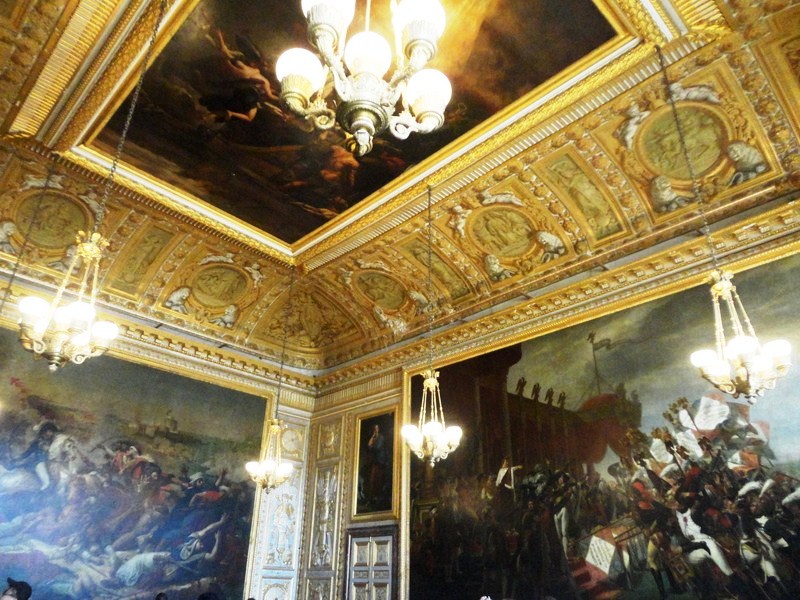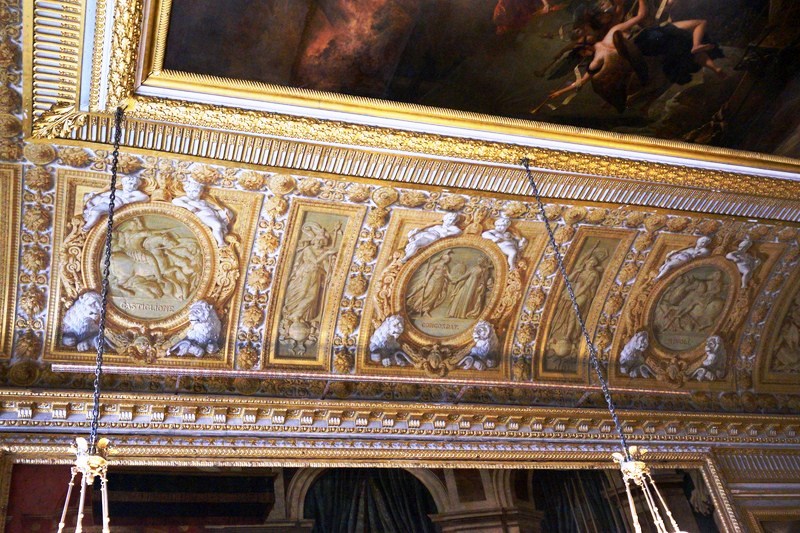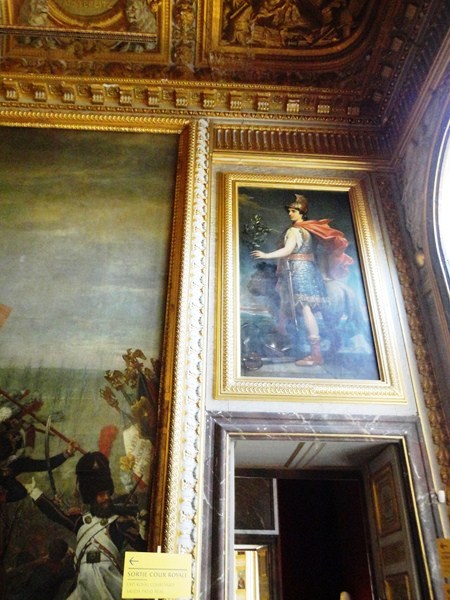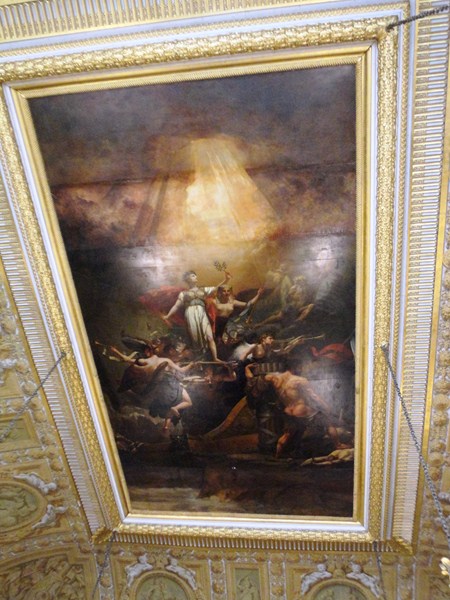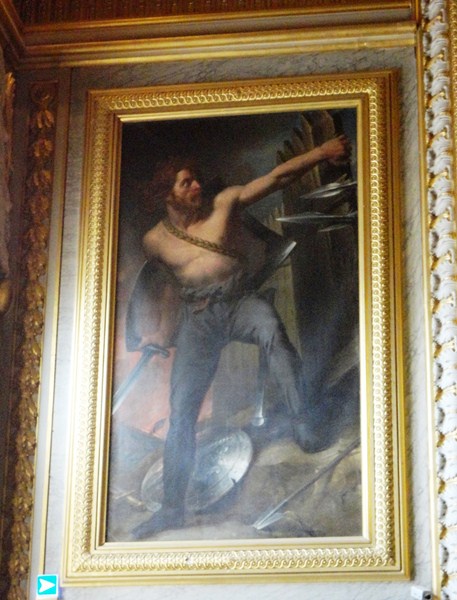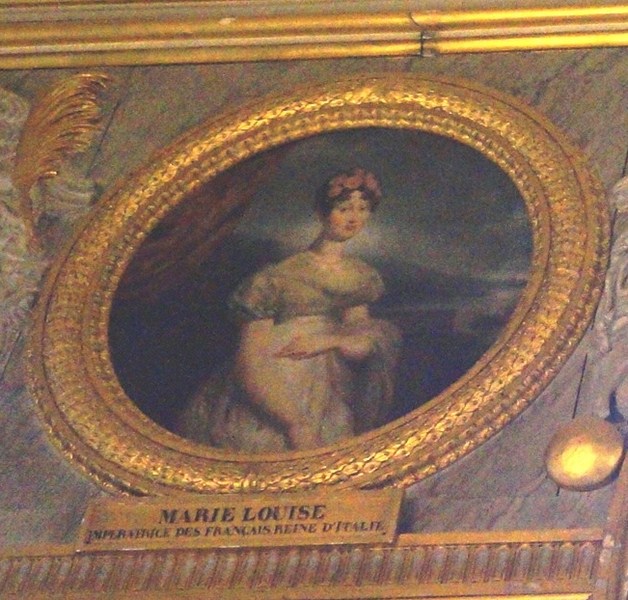At the exit of the Queen’s Grand Apartment is the Coronation Room, the large space adjoining the royal apartments. In 1672, it served as the palace’s second chapel but, in 1682, was changed into the Great Guard’s Room, until 1789, “for both the King and the Queen.” Every year, on Holy Thursday, the King would wash, then kiss the feet of 13 impoverished children. On April 13, 1771, Louis XV held a lit de justice in this room, during which he announced the dissolution of the parliaments.
Check out “Versailles Palace” and “Versailles Palace – Queen’s Grand Apartment”
However, the name of the room has nothing to do with the Bourbon monarchs. In 1833, it became a room devoted to the glory of Napoleon Bonaparte, First Consul and then Emperor of the French, and the plan was to display the greatest paintings of his reign which could not be placed anywhere else in the palace – the two incredibly large and prestigious paintings commissioned from Jacques-Louis David.
The first, The Coronation of the Empress Josephine by Napoleon on December 2, 1804 (1805-1808), is a second copy that David painted, for a group of American businessmen, in Paris and then in Brussels in 1808-1822. Throughout the 19th century, the painting was shown across the United States and Europe.
In 1947, the painting was acquired by Versailles and, the following year, was placed in this room, thus recreating this beautiful space as imagined by King Louis-Philippe I. The original painting was moved from Versailles to the Louvre in Paris in 1889. Taking up an entire wall, it commemorates the ceremonies celebrating Napoleon’s coronation as Emperor of the French.
The Distribution of the Eagle Standards on December 5, 1804 (1808-1810), commemorates the Army swearing allegiance to Napoleon after the distribution of the imperial eagle standards at the Champ de Mars in Paris..
The combined talents of palace architect, Frédéric Nepveu, sculptor Jean-Baptiste Plantar (trophies on the wood paneling), and the workshop of painter Jean Alaux (the ceiling arch) created the decor that serves as a backdrop to these works.
Aside from David’s paintings, there is also the enormous Battle of Abukir on 25 July 1799 (1806) by Antoine-Jean Gros. Commissioned by Joachim Murat (the emperor’s brother-in-law), when he was King of Naples, it commemorates one of the most memorable cavalry charges, during the Egypt campaign, of Napoleon’s youth.
The room’s Napoleonic program included other works as well. The ceiling, remarkably raised and gilded, all on the order of Louis-Philippe, features the Allegory of 18 Brumaire (November 9, 1799) by Antoine-Francois Callet. Also called France Saved, it symbolizes Napoleon Bonaparte’s seizure of power. Above the door are the four allegories (The Warrior’s Courage, Genius Rising Despite Desire, Constancy, and Clemency Leaning on Force) by François Gérard.
Between the windows are four portraits – General Bonaparte, general-in-command of the Army of in Italy, by Rouillard; Napoleon I, Emperor of the French, by Alexandre Dufay, known as Casanova (a painting from that time, adapted here); a medallion of Josephine and Emperor Napoleon by Robert Lefèvre and the two Empresses Joséphine de Beauharnais and Marie-Louise von Habsburg, by Dedreux-Dorcy.
In the center of the room stands the Column from the German Campaign. Also called the “Austerlitz Column,” it was commissioned by Napoleon from the Sèvres Royal Porcelain Manufactory to commemorate his first imperial victories. One of the masterpieces of Sèvres porcelain production during the Empire, it was was created in collaboration with Brongniart (drawing), Bergeret (painting) and Thomire, Duterme and Co. (bronze mounting) and completed in 1807. The following year, it was placed in the State Apartments at the Tuileries Palace (Palais des Tuileries).
Coronation Room: Chateau De Versailles, Place d’Armes, 78000 Versailles, France. Tel: +33 1 30 83 78 00. Website: www.chateauversailles.fr. Open daily (except on Mondays and May 1), from 9:00 AM to 6:30 PM. Last admission is 6 PM while the ticket office closes at 5.45 PM. The estate of Trianon and the Coach Gallery only open in the afternoon while the Park (7 AM to 8:30 PM) and Gardens (8 AM to 8.30 PM, last admission: 7 PM) are open every day. Access to the Gardens is free except on days of fountains shows. You can access the estate of Trianon through the Gardens or through the city. The Petit Trianon is only possible via the Grand Trianon.
Admission: 27 € for Passport with Timed Entry (days with Musical Fountains Shows or Musical Gardens), 20 € for Passport with Timed Entry (without musical fountains show or musical gardens), 12 € for Estate of Trianon ticket(without Musical Fountains Show or Musical Gardens), 10 € for Passport with Timed Entry (free admission, days with Musical Fountains Show or Musical Gardens), 9,50 € for Musical Fountains Show ticket, 8,50 € for Musical Gardens ticket, 28 € for the Fountains Night Show.
How to Get There: The cheapest option for reaching Versailles is by train. There are three train stations in Versailles. RER line C arrives at Versailles Château – Rive Gauche train station, the closest one of the Palace (just 10 minutes’ walk to the Palace). SNCF trains from Gare Montparnasse arrive at Versailles Chantiers train station, which is 18 minutes on foot to the Palace. SNCF trains from Gare Saint Lazare arrive at Versailles Rive Droite train station, 17 minutes on foot to the Palace. RER C and SNCF train times are available on www.transilien.com.

